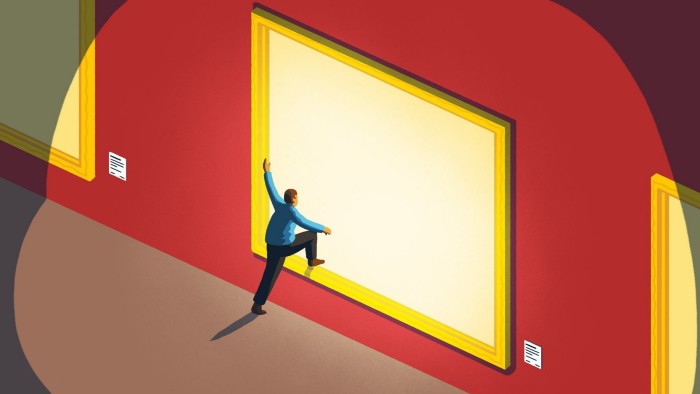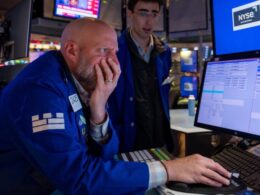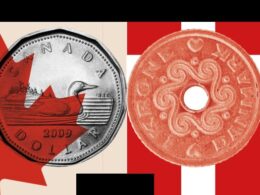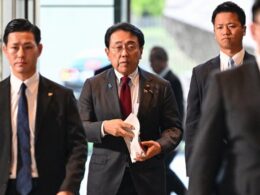Stay informed with free updates
Simply sign up to the Arts myFT Digest — delivered directly to your inbox.
The writer is the author of ‘Embracing Uncertainty: how writers, musicians and artists thrive in an unpredictable world’
In 1990, Seamus Heaney translated Sophocles’s Philoctetes as The Cure at Troy. He added a Chorus of his own invention, urging audiences to be wary of sweet talk but never to close their minds. It also imagined the possibility of love.
In those years of the Troubles, this seemed a distant hope, but the play did what Heaney felt art should do: it offered a ‘glimpsed alternative’. Think again, feel differently, he argues. That’s how change begins.
In our own troubled times, it’s common to dismiss the arts as merely decorative, trivial, distracting. But historians know better, arguing that if you want to identify when change starts, the best place to look for it is in art. So what role can artists play in times of confusion and fear?
The Cure at Troy was produced by Field Day, an arts collective set up by the actor Stephen Rea and playwright Brian Friel in 1980. None of their productions were party political, but their tragedies and comedies held up to Northern Irish audiences stories and images that challenged rigid stereotypes and mindsets.
And while nobody would draw a straight line from Field Day to the Good Friday Agreement, Rea’s modest claims for his collective are far from trivial. “It gave people a new way to think and feel about what they were living through,” he told me. “It made movement possible.”
Picasso’s Guernica, perhaps the most famous piece of political art, didn’t bring the dictator Francisco Franco to his knees, but as it went on tour in England and the United States, it raised money for the Spanish Republican cause and helped erode American isolationism. Stuck in New York while Franco remained in power, the painting remained a provocation and a litmus test for the fragility of Spanish fascism. When attitudes softened, Barcelona’s mayor opened a museum of Picasso’s work and Franco’s government attempted to lure the picture home; when they hardened, Spanish citizens were jailed simply for receiving a postcard of the painting.
Guernica did and does what art can, holding a mirror up to who and what we are, educating our imagination.
Where propaganda simplifies, urging us to stop thinking, art invites us into the liminal space between what is and what ought to be. The Decoration series, by Britain’s premier protest artist Peter Kennard in response to the invasion of Iraq, combined digital prints of American and British military honours with painted helmets and bandages where medals would be. You can’t help but imagine who these missing faces belonged to, and in so doing, you may also feel your own indifference shift.
“All forms of art,” Kennard says, “show a human spirit that hasn’t been bashed down. One of the things I can do is respond to the world; just responding to my own life didn’t seem enough.”
Bearing witness reduces our isolation from one another. When he wrote the song “Strange Fruit”, the white Jewish American schoolteacher Abel Meeropol did so as an expression of solidarity. “I wrote ‘Strange Fruit’, he said, because I hate lynching and I hate injustice.” The tune so gorgeous and its subject so grotesque, the juxtaposition draws you in and keeps you listening. Which do you want: the beauty or the horror? Lacking a single word of protest, it has been called the greatest protest song ever written.
The role of art is not to frame policy or propose legislation but to create the conditions in which we can begin to imagine a future different from the present. A fundamental precondition of change is the sense that, as Rea said, movement is possible. A bulwark against sentiment, kitsch and jingoism, artists strive to reignite a sense of agency and possibility.
This is what Shostakovich did when, finally overcoming the terror that had silenced him for years, his 13th symphony recalled to his audience their shared failure to speak out against genocide. A protest against amnesia, it offered its audience a gift: the chance to retrieve their humanity. On the tense opening night, they cheered, not because the music provided a solution to a problem but because he had given them an embodied sense of possibility.
Through the ages, what art and artists provide in times of great uncertainty is a moment and a means for us to feel and think for ourselves, to imagine change. Individually and collectively. To reframe what feels immovable, to revive what feels dead. Or, as Kae Tempest put it at the end of their own version of Philoctetes: Give courage. Take courage.
Source link









